NRAO eNews
Volume 5, Issue 6 • June 7, 2012
Upcoming Events
![]() ALMA Early Science Results & Opportunities
ALMA Early Science Results & Opportunities
Jun 14, 2012 | Anchorage, AK
![]() NRAO Semester 2013A Call for Proposals
NRAO Semester 2013A Call for Proposals
Jul 9, 2012
![]() ALMA Cycle 1 Proposal Deadline
ALMA Cycle 1 Proposal Deadline
Jul 12, 2012
![]() NRAO Semester 2013A Proposal Deadline
NRAO Semester 2013A Proposal Deadline
Aug 1, 2012
![]() CASPER Workshop
CASPER Workshop
Aug 13-18, 2012 | Green Bank, WV
![]() The First Year of ALMA Science
The First Year of ALMA Science
Dec 12-15, 2012 | Puerto Varas, Chile
A Letter to Our Community
Tony Beasley
I am honored to have been selected as Director of NRAO, and thank Associated Universities, Inc. (AUI) for the opportunity to lead the Observatory. This role is both a privilege and a great responsibility, and I look forward to the challenges ahead.
On behalf of the entire astronomy community, I would like to thank Fred Lo for his leadership and recognize the many impressive accomplishments of his decade as Director. His emphasis on engaging the university community and enabling world-class science for the benefit of the broad astronomy community was prescient and unwavering.
This is both an exciting and challenging era for astronomy. Through the efforts of the Observatory’s excellent staff, the NRAO is the preeminent radio astronomy organization in the world. NRAO’s role in the U.S. and global scientific and technical communities is vital, and each of our research facilities is opening new frontiers and discovery space. The Atacama Large Millimeter/submillimeter Array and the Very Large Array will soon enter full science operations, and the Green Bank Telescope and the Very Long Baseline Array are engaged in world-class science. The NRAO Coordinated Development Lab is a national treasure, conducting research and development that is key to realizing next-generation facilities.
There are also significant uncertainties in our present and future. The struggling U.S. and world economies, and the shifting politics here and abroad, will continue to impact U.S. science funding for several years. The outcomes of the National Science Foundation’s Portfolio Review (due in August) are difficult to predict, and will also likely yield challenges. In the coming months, budget constraints will force hard decisions about Observatory operations and user community support priorities.
We are, of course, responding to these challenges as constructively as possible, improving efficiency while continuing to deliver strong performance. We focus on making every NRAO research facility a success for our users. The Observatory continues to adapt and evolve, guided by the community’s priorities and interests. We are strategically strengthening our technical development program, nurturing the Coordinated Development Lab, and collaborating with universities and industry to realize important new capabilities. We are working daily to improve the user experience, for example, with the Proposal Submission Tool, the Common Astronomy Software Applications package, and the NRAO Archive. We remain strongly committed to serving the tax-paying public via our outreach and STEM education programs.
There is much to do, and I am certainly enjoying being back at NRAO, engaged in the Observatory’s mission, and privileged to be leading an extraordinary team of professionals who are dedicated to scientific adventure and discovery.
ALMA Cycle 1 Call for Proposals

The ALMA Director, on behalf of the partner organizations and all the personnel in Chile, East Asia, Europe and North America involved in bringing ALMA to Early Science readiness, is pleased to issue the Cycle 1 Call for Proposals.
We invite members of the astronomy community to propose scientific programs to be scheduled within the ALMA Early Science Cycle 1 period which we expect to start on January 1, 2013. This provides an important opportunity for Early Science from this cutting edge facility. The Cycle 1 period will span 10 months and any astronomer may submit proposals.
The full Call, and all information and tools relevant for proposal preparation, are available at the ALMA Science Portal.
The ALMA Helpdesk is accessed through the Science Portal. User support is provided in North America by the NRAO – North American ALMA Science Center (NAASC), which also provides face-to-face support.
We are looking forward to seeing your proposals.
Proposal Evaluation & Time Allocation for Semester 2012B
Tim Bastian and Joan Wrobel
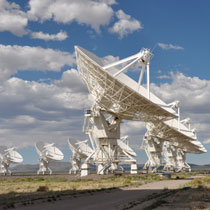
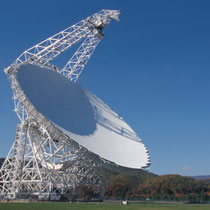
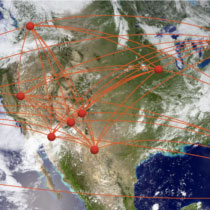
The Observatory has completed the Semester 2012B proposal evaluation and
time allocation process for the Jansky Very Large Array, the Very Long Baseline Array / High Sensitivity Array, and the Green Bank Telescope. A total of 322 proposals were received on the 1 February 2012 submission deadline. In aggregate, the proposals covered the broad spectrum of modern research in astronomy and astrophysics. A total of 1040 unique authors submitted proposals to the Observatory, with 758, 323 and 131 proposers competing for time on the Jansky VLA, GBT and VLBA/HSA, respectively.
Proposals were evaluated on the basis of scientific merit by eight Science Review Panels (SRPs). The proposals were also reviewed for technical feasibility by NRAO staff. Reviews were completed in April and then cross-reconciled by the Time Allocation Committee (TAC) during its 25-27 April 2012 meeting in Charlottesville, VA. The TAC consists of the chairs of the SRPs and was charged with recommending a science program for Semester 2012B to the NRAO Director. The recommended program was reviewed and approved on 18 May 2012.
A disposition letter was sent to the principal investigator and co-investigators of each proposal on 31 May 2012. A TAC report containing information for proposers and observers, including statistics and telescope pressure plots, was released the same day. The approved science program will be posted soon.
The Observatory welcomes community feedback on its process for proposal evaluation and time allocation. Please provide such feedback via the Proposal Review department of the NRAO Helpdesk.
ALMA Project Update
Al Wootten
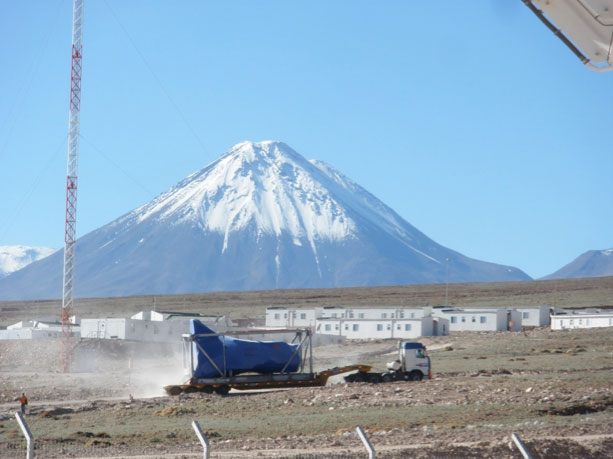
Figure 1: The final ALMA Vertex antenna delivery: the 25th antenna base from Texas arrived at ALMA!
 Zoom
Zoom
ALMA Construction
At the end of April, 33 antennas were at the ALMA Array Operations Site (AOS), half of the final budgeted complement of antennas. Ceremonies were held to mark the occasion at the Operations Support Facility (OSF) and at the Santiago Central Office (SCO).
The antennas at the AOS include a mixture of antennas from the three arrays that comprise ALMA: the main 12m array, the Atacama Compact Array (ACA), and the Total Power array. Up to twenty 12m antennas have been used for Cycle 0 observations. There are seven 7m antennas in the ACA, and one 12m antenna operating in concert with them. One of the 12m antennas has been placed on a 2km baseline for tests of long baseline phase correction. Observations of 321 GHz water masers on that baseline are under analysis. As of late May, there were 40 antennas accepted and a total of 61 antennas both assembled and unassembled at the OSF.
The final Vertex antenna, the 25th, arrived at the OSF from Texas on 16 May (see Figure-1); some components remain in transit from Germany. With the delivery of this antenna, the entire North American complement of antennas is now present on the ALMA site.
ALMA Science Operations
Observations of Cycle 0 science projects continue during sessions on alternate weeks; 15 such sessions have been completed. As the winter deepens at ALMA, the high frequency observing time increases. Several Cycle 0 projects were observed at Band 9 during the most recent session. Reduction of data gathered during these sessions now includes efforts at the ALMA Regional Centers (ARCs), including the North American ALMA Science Center (NAASC). Successful ALMA Science Verification data were also obtained in Band 9 toward the complex multiple young star forming system IRAS16293-2422.
There were 772 Notice of Intent submissions received for Cycle 1 Early Science. The Call for Proposals for Cycle 1 was issued on 31 May 2012; a separate article covers this event.
Passages
Thijs de Graauw, announced that he will be leaving his post as ALMA Director when his contract expires in early 2013, after the Inauguration. The search for a new Director has begun, as is customary for these international recruitment processes. Under de Graauw's leadership, ALMA has progressed from a facility with no antennas to producing world-leading millimeter science.
Two highly valued ALMA scientific staff members -- Richard Hills, ALMA Project Scientist, and Alison Peck, Deputy Project Scientist -- will also be leaving Chile in the near future. Their scientific contributions, managerial leadership, and collaborative roles within the observatory have made them an integral part of the Joint ALMA Observatory (JAO). Richard will be completing his contract at the JAO and returning to Cambridge University in the United Kingdom in October 2012 after leading the scientific commissioning and verification activities of ALMA for five years, providing the scientific leadership and expertise needed in this challenging role. Alison will leave the JAO at the end of May and will return to the United States to continue working for NRAO as an ALMA Regional Center Support Scientist in the NAASC in Charlottesville. For the past 5 years, she has done an exceptional job as Deputy Project Scientist leading the implementation of the Commissioning and Science Verification (CSV) plan and creating a strong CSV team.
ALMA Project Scientist and Deputy Project Scientist will be replaced by the new positions of Chief Scientist and CSV Project Scientist. Ryohe Kawabe has agreed to join as Chief Scientist to begin in June. A search for CSV Project Scientist is under way. The main role of the CSV Project Scientist will be to oversee the completion of the "observing modes" and similar deliverables to Operations.
ALMA Image Release: ALMA Turns its Eyes to Centaurus A
31 May 2012
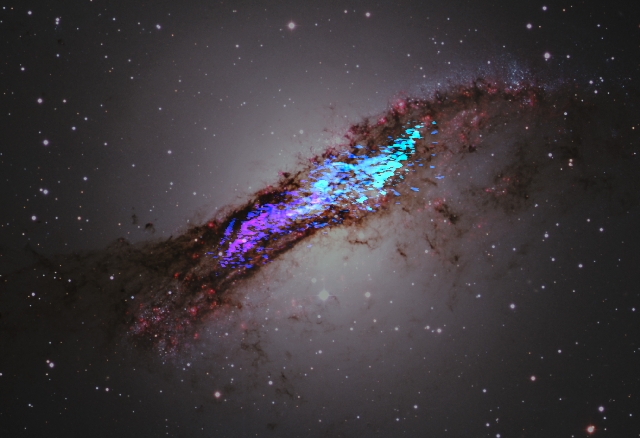
 Zoom
Zoom
A new image of the center of the distinctive galaxy Centaurus A, made with the Atacama Large Millimeter/submillimeter Array (ALMA), shows how the new telescope, which is still under construction, allows astronomers to see with unprecedented quality through the opaque dust lanes that obscure the galaxy's center.
Centaurus A is a massive elliptical radio galaxy (a galaxy that emits strong radio waves) and is the most prominent, as well as the nearest, radio galaxy in the sky. Its very luminous center hosts a supermassive black hole with a mass of about 100 million times that of the Sun... Read More.
ALMA Development Program
Al Wootten
In North America, a Call for Studies of Proposed Development Upgrades of the Atacama Large Millimeter/submillimeter Array (ALMA) was issued in November 2011. Seventy-seven investigators associated with twenty-six institutions responded to the Call with a total of 21 study proposals.
A panel of highly qualified members of the astronomical community reviewed the study proposals. Panel members were proposed by the ALMA North American Science Advisory Committee membership; National Science Foundation (NSF) consent was received for the panel makeup. To avoid conflict of interest, none of the review panel members are affiliated with NRAO.
The panel discussed the results of the rankings in a telecon. The available funding totaled $500K, which was sufficient to fund the top eight proposed studies (Table-1). NSF consent was received for the funding of the highest ranked proposals, and successful Principal Investigators were notified of their success.
| Program Title | PI | Co-Is |
|---|---|---|
| Second Generation Receiver for ALMA Band 6 | Anthony R. Kerr (NRAO) | NRAO and Univ. Virginia |
| Ultra-wideband quantum limited amplifiers for receiver frontends | D. Woody (Caltech) | CalTech |
| Design Study for Production of the Band 2 Cartridges | Eric Bryerton (NRAO) | NRAO and Univ. Arizona |
| A Visualization Portal for ALMA Data | E. Rosolowski (UBC-Okanagan) | Univ. Calgary and Harvard |
| Millimeter/Submillimeter VLBI with ALMA | Jeff Kern (NRAO) | NRAO and Haystack Observatory |
| Unleashing Large Dataset Science | Lee Mundy (Univ. Maryland) | Univ. Illinois and NRAO |
| Increasing the ALMA Data Rate | B. Glendenning (NRAO) | Mark Lacy (NRAO) |
| ALMA Band 1 Receiver Development Study | P.T.P. Ho (ASIAA) | HIA, NRAO and Univ. Chile |
This Month @ the NAASC
New ALMA Band 9 Science Verification Data
A new installment of ALMA Science Verification data is available. This release contains Band 9 data on IRAS16293. The source, the data, and the data reduction procedure are described in the accompanying CASA Guide. This is the first ALMA Band 9 Science Verification data release and represents a milestone for ALMA construction. Further details are on-line.
In addition, a new program of Science Verification aimed at testing new capabilities of ALMA for Cycle 1 and beyond will begin in June 2012, and the list of suggested targets will be available shortly at the link above.
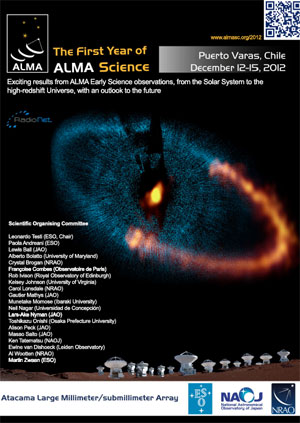
The First Year of ALMA Science
The Joint ALMA Observatory announces that the international conference "The First Year of ALMA science" will be held in Hotel Cumbres Patagónicas, Puerto Varas, Chile on 12-15 December 2012.
ALMA Early Science operations started 30 September 2011. Over 100 high science profile projects have been identified as high priority for execution. The first exciting scientific results from Science Verification datasets and Cycle 0 observations are coming out in refereed journals since the beginning of 2012. At the end of the year, the ALMA users community will be in a position to review the first science results produced by this new and unique facility. The conference will cover all the ALMA Science topics covered by Early Science observations, from observations of the Solar System bodies to objects in our own Galaxy, the local to high redshift Universe. While the conference will obviously focused on ALMA observational results, we plan to include presentations and discussions on related theoretical implications and predictions as well as relevant complementary data from other major facilities. The conference will also be an ideal venue to discuss the scientific priorities for the ALMA development plan upgrades in the context of the first results from Early Science.
To allow more ALMA users to propose contributions based on results from their Cycle 0 projects we selected a late deadline for abstract contributions on 27 Oct 2012.
Important deadlines (all 2012)
- Registration opens: 1 June
- Abstracts deadline: 27 Oct
- Contributed talks selection: 16 Nov
- Conference dates: 12 – 15 Dec
Conference website: http://www.almasc.org/2012
Conference email: asc2012@almanospam.example.cl
This conference is co-sponsored by the Joint ALMA Observatory and the ALMA partners (ESO, NAOJ and NRAO) with additional support provided by the EC-FP7 Radionet3 project.
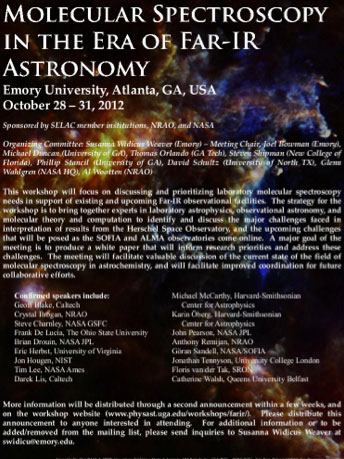
Molecular Spectroscopy in the Era of Far-IR Astronomy Workshop
28-31 Oct 2012, Emory University, Atlanta, Georgia http://www.physast.uga.edu/workshops/farir/home
This workshop will focus on discussing and prioritizing laboratory molecular spectroscopy needs in support of existing and upcoming Far-IR observational facilities. The strategy for the workshop is to bring together experts in laboratory astrophysics, observational astronomy, and molecular theory and computation to identify and discuss the major challenges faced in interpretation of results from the Herschel Space Observatory, and the upcoming challenges that will be posed as the SOFIA and ALMA observatories come online. A major goal of the meeting is to produce a white paper that will inform research priorities and address these challenges. The meeting will facilitate valuable discussion of the current state of the field of molecular spectroscopy in astrochemistry, and will facilitate improved coordination for future collaborative efforts.
Confirmed invited speakers: Lou Allamandola (NASA Ames), Geoff Blake (Caltech), Crystal Brogan (NRAO), Steven Charnley (NASA Goddard), Frank C. De Lucia (Ohio State), Brian Drouin (NASA JPL), Maryvonne Gerin (Paris Observatory), Eric Herbst (Virginia), Jon T. Hougen (NIST), Timothy Lee (NASA Ames), Darek C. Lis (Caltech), Michael C. McCarty (CfA), David Nesbitt (Colorado), Karin Oberg (CfA), John Pearson (NASA JPL), David Plusquellic (NIST), Anthony Remijan (NRAO), Goran Sandell (NASA/SOFIA) Jonathan Tennyson (University College London), Floris van der Tak (SRON), Catherine Walsh (Queen's University), Susanna Widicus Weaver (Emory).
Molecular Emission at High Redshift Comes of Age
NRAO will host a workshop entitled "Molecular Emission at High Redshift Comes of Age" in Charlottesville, Virginia, 13-15 September 2012. The venue is the NRAO Headquarters, conveniently located on the grounds of the University of Virginia.
Workshop focus items will include all aspects of the study of molecular emission at high redshift. More information will be made available as the structure of this conference evolves.
Brown and vanden Bout published a detection of CO emission from a galaxy at z = 2.3 using the NRAO 12m telescope in 1991. In the 21 years since this CO detection, radio emission lines have become an indispensable tool for tracing molecular gas throughout the Universe. Today molecular and atomic lines at many wavelengths provide complementary insights into the structure of the ISM in galaxies early in the history of the Universe. New observing capabilities enrich our understanding of the evolution of galaxies through galactic time, using modern instrumentation available at new and expanded facilities worldwide. The workshop will examine the current status and future directions of research using spectral lines to probe the high redshift Universe. The event will also focus on the contributions of recently retired NRAO Director Paul vanden Bout.
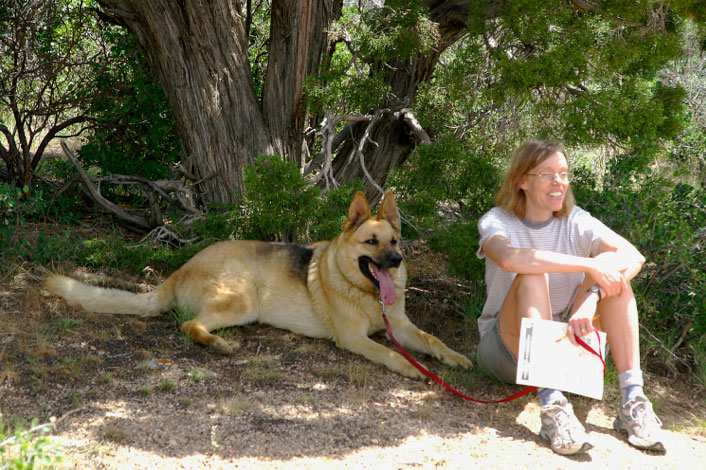
Meet the NAASC: Susan Loveland
Susan Loveland has joined the NAASC as a scientific programmer, with a focus on visualization and interactive analysis tools in CASA.
This is her second stint working for the NRAO. Susan previously worked for the EVLA developing the web-based proposal submission tool. Between her NRAO appointments, she worked as an Assistant/Associate Professor of Computer Science at Adams State College in Alamosa, CO. Her software experience also includes work at Scientific Fisheries and IBM. She has a Ph.D. In mathematics from Utah State University and worked as an Assistant/Associate Professor of Mathematics at the University of Alaska, Anchorage before the software bug hit her and she converted over to computer science.
She is married to Jim Jacobs, who also works as a software engineer at the NRAO in Socorro. She has also has a nine-year old son, Bryce Jacobs, who is an avid flute player at Cottonwood Valley Charter school. In her free time, she enjoys jogging with her dogs, hiking, and camping.
ALMA Band 5 Receiver Approval
Eric Bryerton
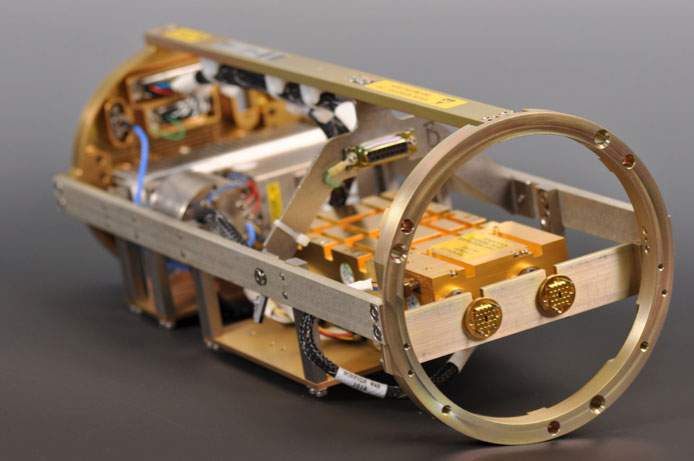
Figure 1: Photograph of warm portion of an ALMA local oscillator. The output from each waveguide (one per receiver polarization) enters the cryostat and, for Band 5, is doubled in frequency before pumping the SIS mixers at a frequency between 171-203 GHz.
 Zoom
Zoom
Upon the recommendation of the ALMA Development Steering Committee (ADSC), the ALMA Board recently approved construction of a full suite of Band 5 receivers for ALMA. The project will be undertaken jointly by two of ALMA’s regional partners. The European Southern Observatory (ESO) will oversee development of the cold cartridges, which will be produced by a GARD (Sweden) and NOVA (Netherlands) partnership. The cold cartridges contain the cold optics and very low noise SIS mixers. In North America, the NRAO Technology Center (NTC) will build the local oscillators for each Band 5 receiver.
Band 5 covers the 163-211 GHz atmospheric window and will be the first new frequency band added to ALMA post-construction. Band 5 will be able to study and image the very first galaxies though highly redshifted (8.0 < z < 10.65) emission of the 158 μm [CII] fine-structure line. Band 5 receivers will also be used to image water vapor emission from the 183 GHz 313 – 220 para-H2O transition in protoplanetary disks, planetary atmospheres, and comets.
Single-ended SIS mixers, such as those used for band 5, require a local oscillator with extremely high signal-to-noise ratio (SNR), in excess of 160dBc, so that noise sidebands of the local oscillator do not add to the total system noise of the receiver. In addition to extremely high SNR, the local oscillators also require very high levels of phase stability to preserve coherence of the array. The Front End Local Oscillator (FELO) group at the NTC has been developing electronically tunable, very high SNR local oscillators for single-ended SIS mixers for several years, producing the local oscillators for all seven ALMA bands currently under construction as well as supplying designs and components for SIS receivers at other millimeter and sub-millimeter observatories.
Joint development of the Band 5 cold cartridges and local oscillator has already begun, and full production will begin in early 2013.
VLBA Migrates to DiFX Version 2.1
Walter Brisken & Adam Deller
The VLBA has been correlating scientific observations exclusively with the DiFX software correlator (Deller et al., 2007) since December 2009. This initial deployment came with features that somewhat extended those of the hardware correlator it replaced. A major upgrade, DiFX 2, was released in October 2010 (Deller et al., 2011). This version added significant new capabilities, including the ability to correlate hundreds of phase centers within the primary beam simultaneously at a cost of a factor of just a couple in execution time.
On May 25, 2012 DiFX 2.1 was released and immediately adopted by the VLBA. This version provides support for the VDIF data format that will be produced by the phased Jansky VLA, which will be crucial for integrating the phased JVLA into the High Sensitivity Array. In addition, a large number of operational and logistical improvements have been made, such as the ability to produce visibility spectra with non-powers-of-two channels (useful for high spectral resolution modes).
DiFX is developed on a volunteer basis by a small worldwide team. Special thanks go out to all those who contributed to this release either in the form of code development or testing and to the organizations that supported these activities. Users of DiFX are reminded of the DiFX acknowledgement request, which can be found online.
References
Deller et al., 2011 PASP, 123, 275
Deller et al., 2007 PASP, 119, 318
Global Properties of HI in Galaxies
Jay Lockman, for the SOC
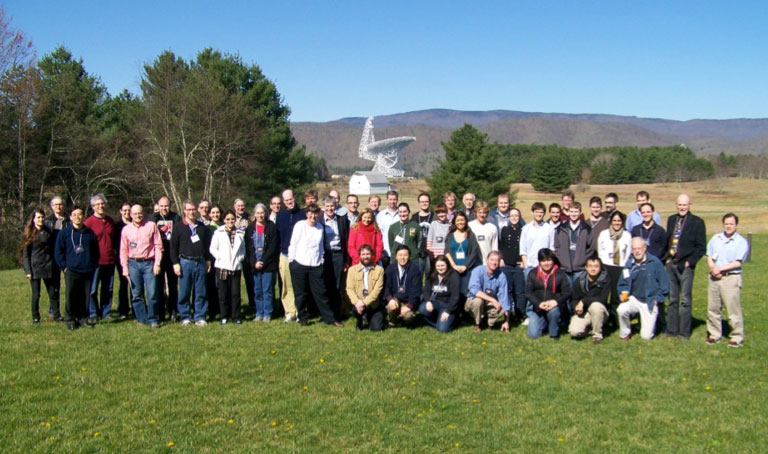
 Zoom
Zoom
On 1-3 April 2012, a workshop celebrating the 35th anniversary of the discovery of the "Tully-Fisher" (TF) relationship was held at the NRAO in Green Bank. This relationship, which links the baryonic content of galaxies through their luminosity with the dark matter content through their rotation curve, remains as puzzling now as it did when it was first discovered, using data from the NRAO 300-foot telescope. The workshop brought together about 50 scientists and students from around the world to discuss the TF relationship and other aspects of hydrogen in galaxies. Both Brent Tully and Rick Fisher were in attendance.
The workshop program and many of the presentations are online. We thank all the participants for a stimulating and enjoyable meeting.
Career Opportunities
New Postings
ALMA Correlator Data Processing Developer: The NRAO in Charlottesville, VA is recruiting for an ALMA Correlator Data Processing Developer. The Software Engineer III will be responsible for developing software for the Correlator Data Processor Cluster, which is attached to the ALMA Correlator hardware. He/she will also interact with hardware engineers, define protocols between the hardware and software, write real time software to extract data at a high rate and format the data for ingestion into the ALMA archive.
Director – ALMA: The Joint ALMA observatory (JAO) in Santiago, Chile is seeking a Director to provide leadership and scientific abilities in the multinational environment of ALMA. The incumbent will have overall responsibility of leading the observatory and for reporting to the ALMA Board on all aspects of the facility. Specifically the Director is responsible for completing within budget the construction phase of ALMA, ensuring the successful transition to full operations, and subsequently operating the observatory to realize its full scientific potential.
Software Engineer II: The NRAO in Socorro, NM is recruiting for a Software Engineer II. Initially he/she will work with other Scientific Support System group members and Open Sky staff to re-insource the Proposal Submission Tool (PST), User Database (UDB), and portal development and maintenance to the NRAO. The Software Engineer will work with our database administrator (DBA) on database issues as well as with our web master on issues like hosting and deploying the PST and portal.
Web Developer: The NRAO in Charlottesville, Virginia is accepting applications for a Web Developer. The Web Developer will be responsible for developing, testing, implementing, and supporting the NRAO science and staff websites. Working as part of the NRAO web team: (1) develop web-based interactives, products, and mobile device applications; (2) administer content management system for the science and staff sites; (3) define and codify technical requirements for products; and (5) maintain a broad knowledge of browser capabilities and web development trends.
Assistant Director, ALMA North American Operations: The NRAO in Charlottesville, Virginia is seeking an Assistant Director for ALMA North American Operations to ensure ALMA NA operations achieve maximum scientific and cost effectiveness of ALMA, and to work in close coordination with the NRAO Director.
Assistant Director, Coordinated Development Lab: The NRAO in Charlottesville, Virginia is recruiting for an Assistant Director for its Coordinated Development Laboratory (CDL). The Head of the Observatory-wide CDL will provide vision and leadership and address key technical challenges of the next generation of instruments while maintaining the performance of current NRAO facilities at state of the art.
From the Archives
Ellen Bouton

About this month's photo: Laying waveguide for the Very Large Array (VLA) in 1974. David Heeschen's role in the design and development of the VLA was especially crucial to what is arguably the most important radio telescope in the world since its completion in 1980. He approved the critical design decisions such as the waveguide for signal transmission, the cooled front ends, and the digital delay and correlator system. That the VLA has recently been rejuvenated as the powerful Karl G. Jansky Very Large Array is testimony to the far-sighted concept that Heeschen developed in the 1960s.
From the Archives is an ongoing series illustrating NRAO and U.S. radio astronomy history via images selected from our collections of individuals' and institutional papers. If readers have images they believe would be of interest to the Archives, please contact Ellen Bouton, ebouton@nrao.edu.

